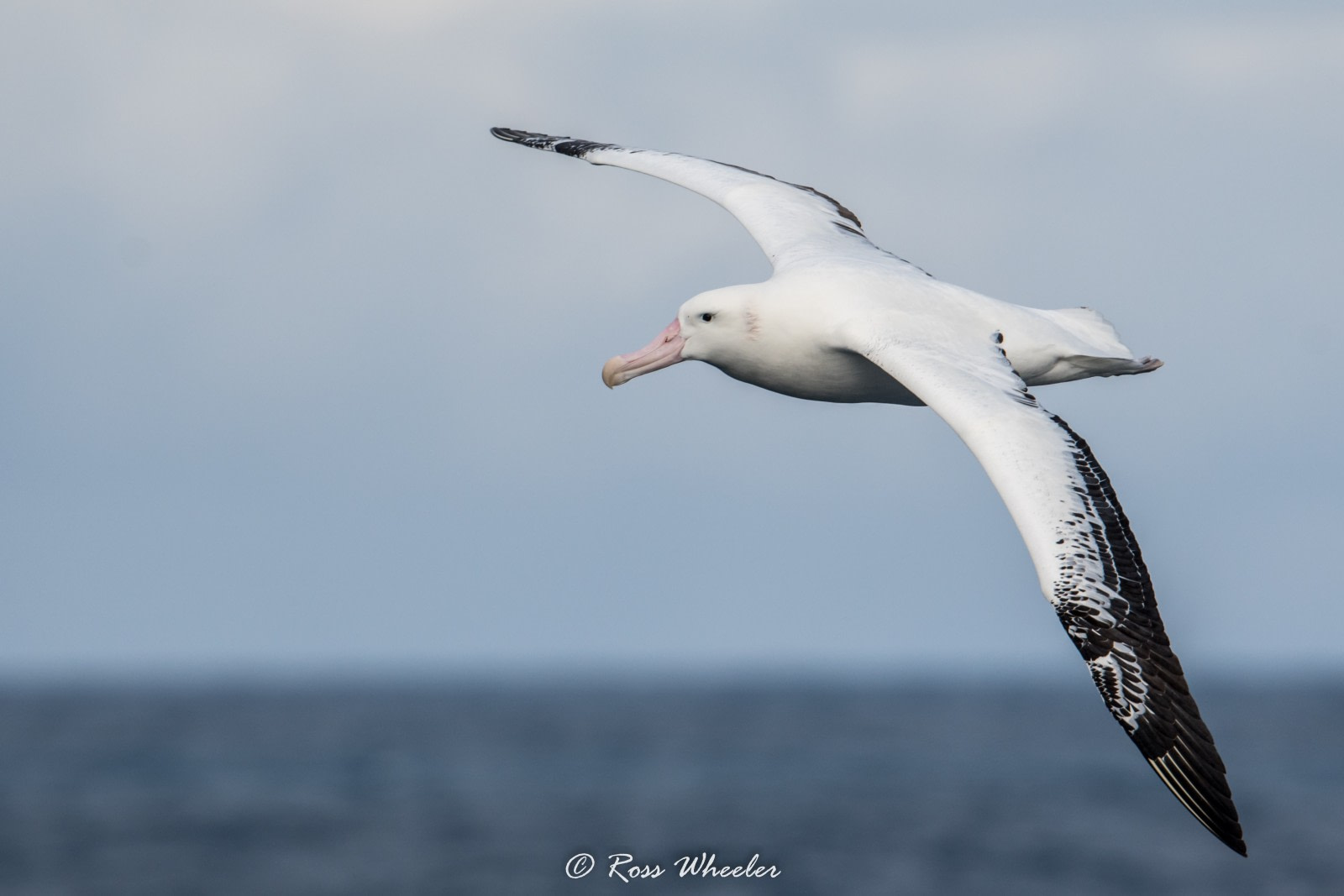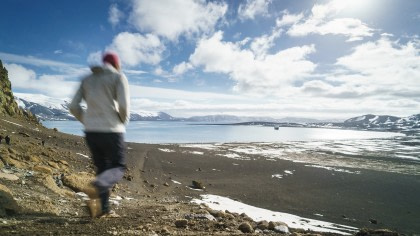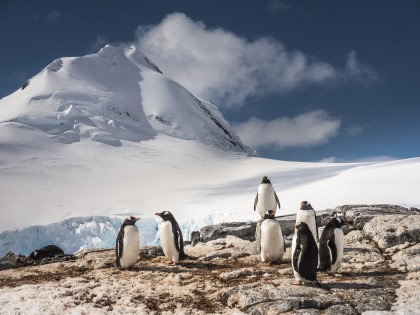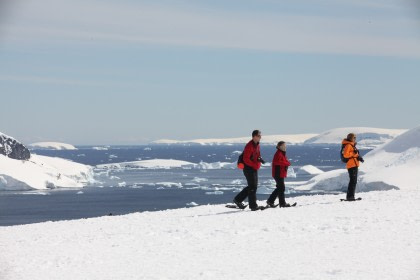Eight albatross species you might spot in the far south
Our guests are usually wildlife lovers, and bird life in particular often takes a front seat. But while many bird enthusiasts tend to focus on the penguins we encounter, there’s a smaller but equally passionate group that favors the more airborne seabirds. Among this birdwatching subset, the albatross is a species that gets (and deserves) strict attention.
Here we’ll cover the key features of the species you’re most likely to encounter on our southern expeditions. Whether you’re bound for Antarctica, the sub-Antarctic, or some combination of both, this entry will give you all the important albatross info as well as where these birds can best be found.
1. Atlantic yellow-nosed albatross (Atlantic Odyssey only)
As with the Tristan albatross, we only see Atlantic yellow-nosed albatrosses during our yearly Atlantic Odyssey trips. These mollymawks (medium-sized albatrosses) can fly for miles without flapping their wings and are most often spotted around Tristan da Cunha. They may also follow our vessels out to sea, hoping to find morsels in our wake. In fact, Atlantic yellow-nosed albatrosses have few natural predators due to their sea-going pelagic lifestyle.

Photo by Vidar Bakken.
2. Tristan albatross (Atlantic Odyssey only)
Another seabird we only see during our Atlantic Odyssey crossing is the Tristan albatross, which can be easily confused with the wandering albatross. Tristan albatrosses are smaller and have darker-colored backs, however, and are endemic to the Tristan da Cunha archipelago – specifically, Gough Island, where most of the world’s population of Tristan albatrosses are found. This is just one of many exotic species that can be seen on our Atlantic Odyssey trips, which focus on bird life.
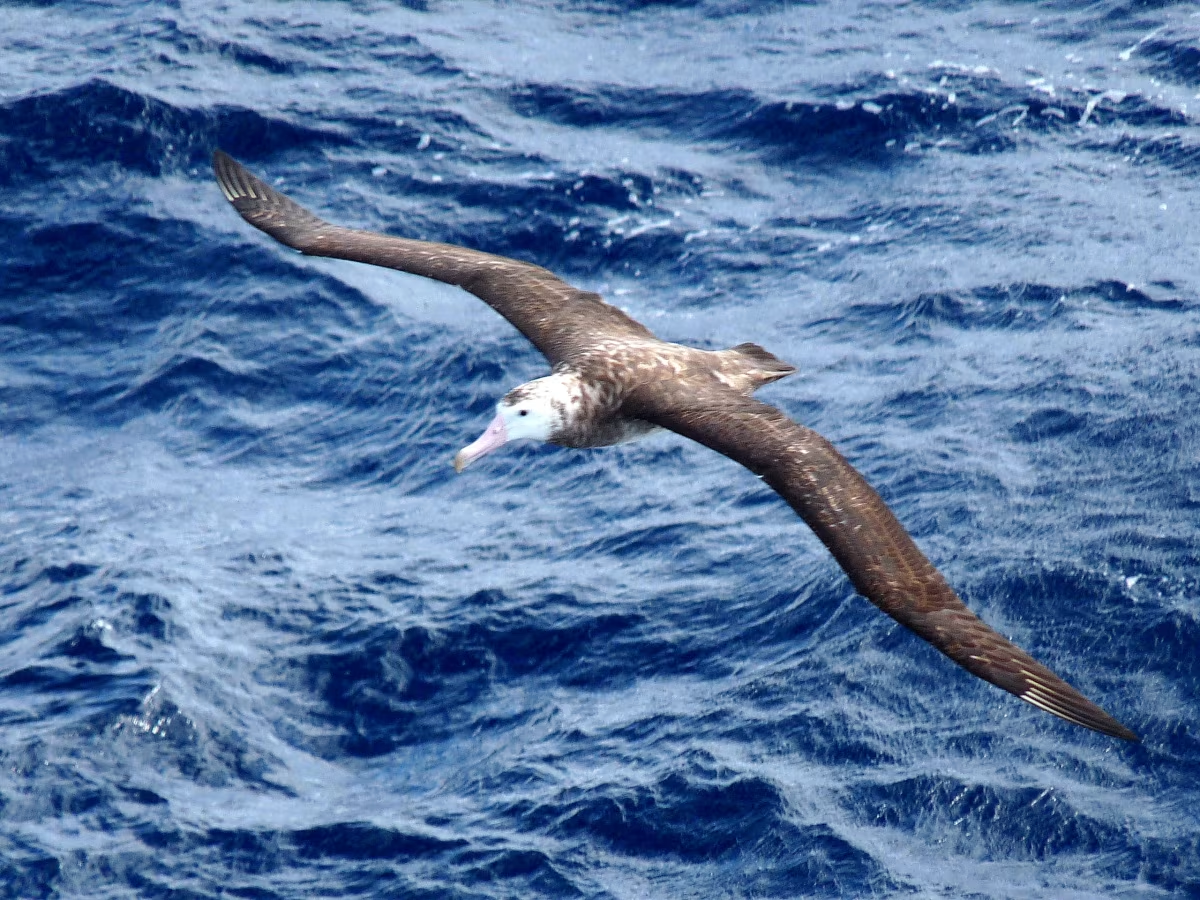
Photo by Michael Clarke Stuff [CC BY-SA 2.0], via Wikimedia Commons
3. Black-browed albatross (Antarctica and sub-Antarctic)
These are among the more easily recognized albatrosses, which is fortunate given how many different places we can see them. The Antarctic Peninsula, Ross Sea, Weddell Sea, South Georgia, and our bird-abundant Falklands voyages all give you the chance to see black-browed albatrosses. These impressive seabirds are excellent fliers, so efficient in the air that their heart rate barely rises above resting.
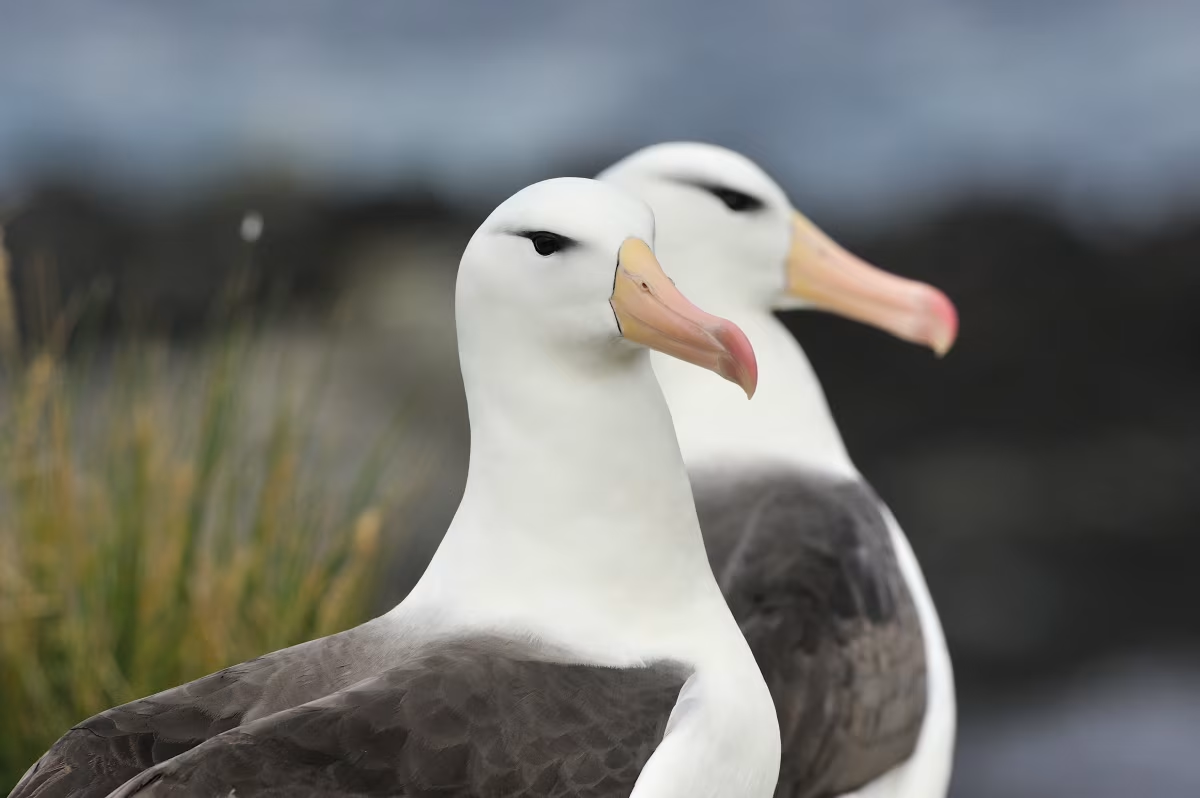
Photo by Martin van Lokven.
4. Grey-headed albatross (Antarctica and sub-Antarctic)
Known as the fastest horizontal flying bird on the planet, the grey-headed albatross has been recorded in flights of nearly 130 kph (80 mph) by Guinness World Records. It is also a mollymawk and nests farther south than any other albatross of that kind. Though the grey-headed albatross can be sometimes seen in Antarctica, we most commonly encounter it during our South Georgia trips.

Photo by Fred van Olphen.
5. Light-mantled albatross (Antarctica and sub-Antarctic)
Also called the “light-mantled sooty albatross,” these seabirds may be seen along the shorelines of the Antarctic Peninsula, though we might also find them farther north. They are incredibly efficient fliers, like most albatrosses, rivaling even black-browed albatrosses in how little energy they expend in the air. Yet for all their winged skill, light-mantled albatrosses are not especially graceful landers, often seen tumbling in the dust when trying to land from too fast a flight.
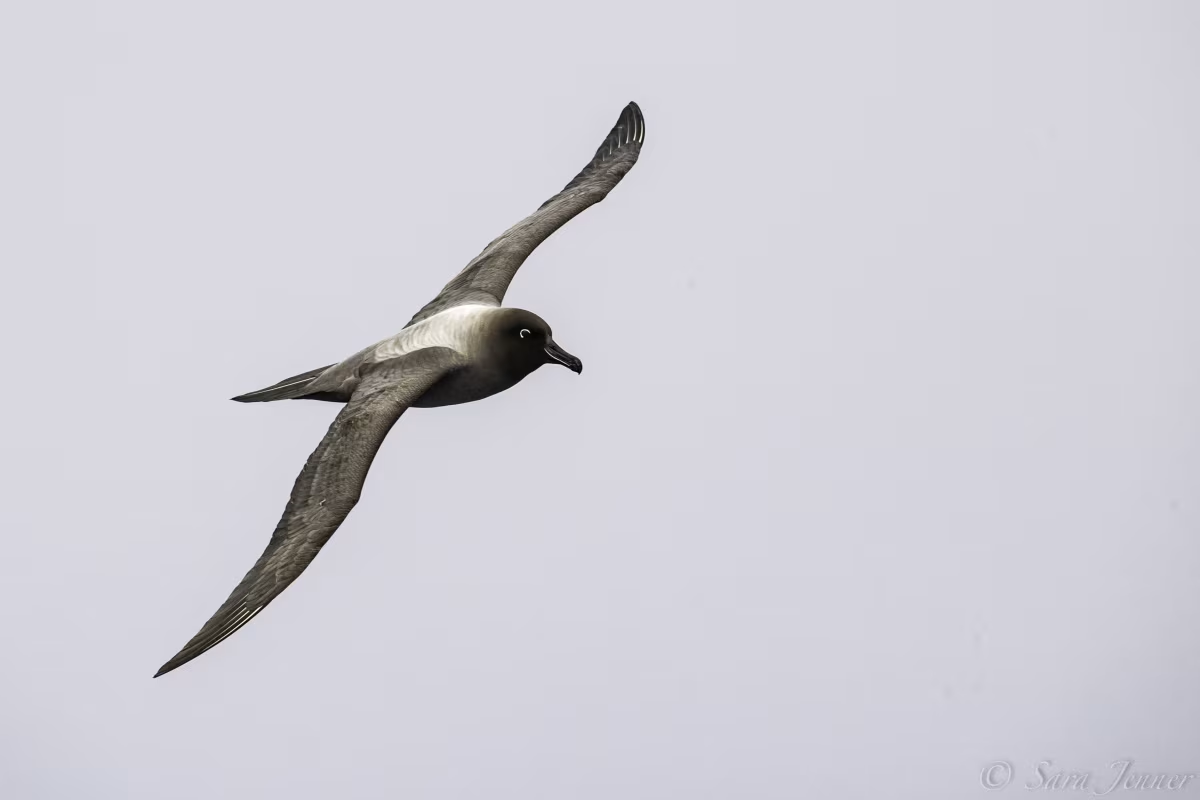
Photo by Sara Jenner.
6. Sooty albatross (Antarctica and sub-Antarctic)
This albatross also goes by the name “dark-mantled albatross” and is a species we tend to see less often than some of the others on this list. Sooty albatrosses sometimes appear in Antarctica but even more commonly on our sub-Antarctic trips. We might even encounter these dark-feathered seabirds on our Atlantic Odyssey voyages, though this is rarer.
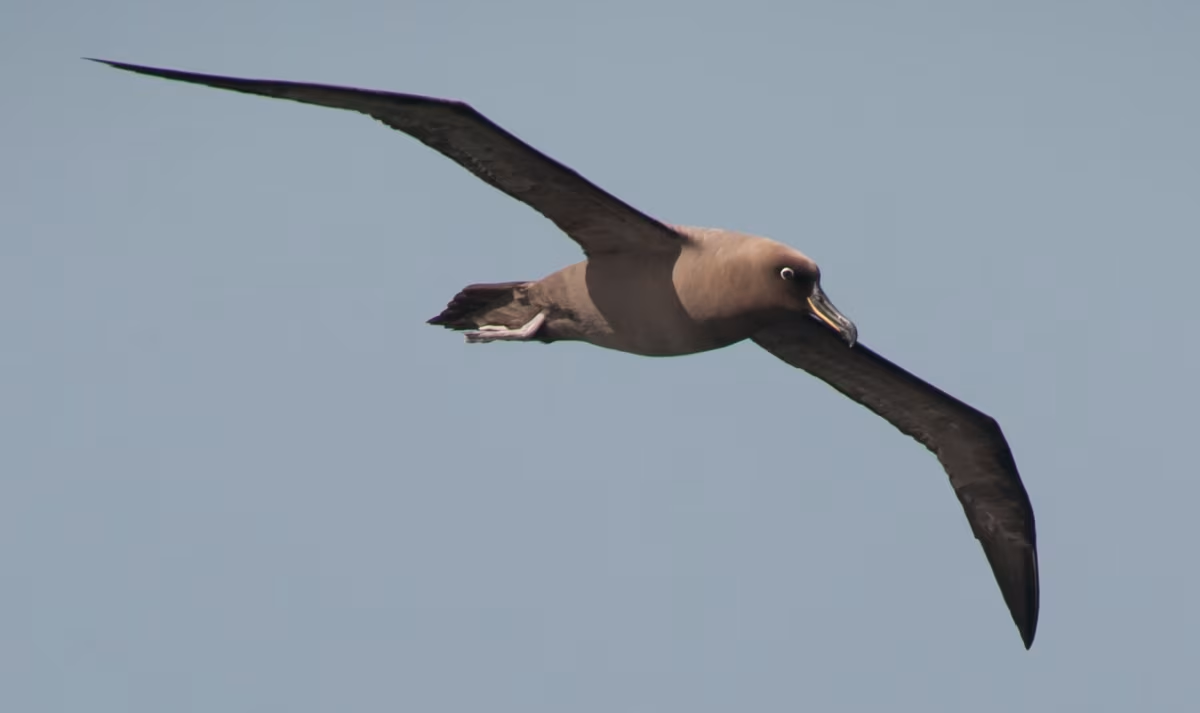
Photo by Erwin Vermeulen.
7. Wandering albatross (Antarctica and sub-Antarctic)
Of all the albatrosses listed here, the wandering albatross and royal (described below) are the species we most often see. Wandering albatrosses are one of the largest birds on Earth and the largest of their genus, Diomedea, having an average wingspan of 3.5 meters (11.5 feet). This helps them to fly for hours without a single flap of the wings, and like some of the other seabirds on this list, they are said to use less energy in flight than when sitting in the nest. We see wandering albatrosses in both the sub-Antarctic and during most of our Antarctica cruises.

Photo by Rinie van Meurs.
8. Royal albatross (Antarctica and sub-Antarctic)
There is some debate as to whether the royal albatross should be divided into two distinct species (northern and southern) or if these are merely sub-species. Whichever the case, you’ll be pleased to know that royal albatrosses are among the more frequently spotted albatrosses of our southern expeditions. Also boasting a wingspan of more than three meters, these seabirds are one of the two largest albatrosses of their genus.
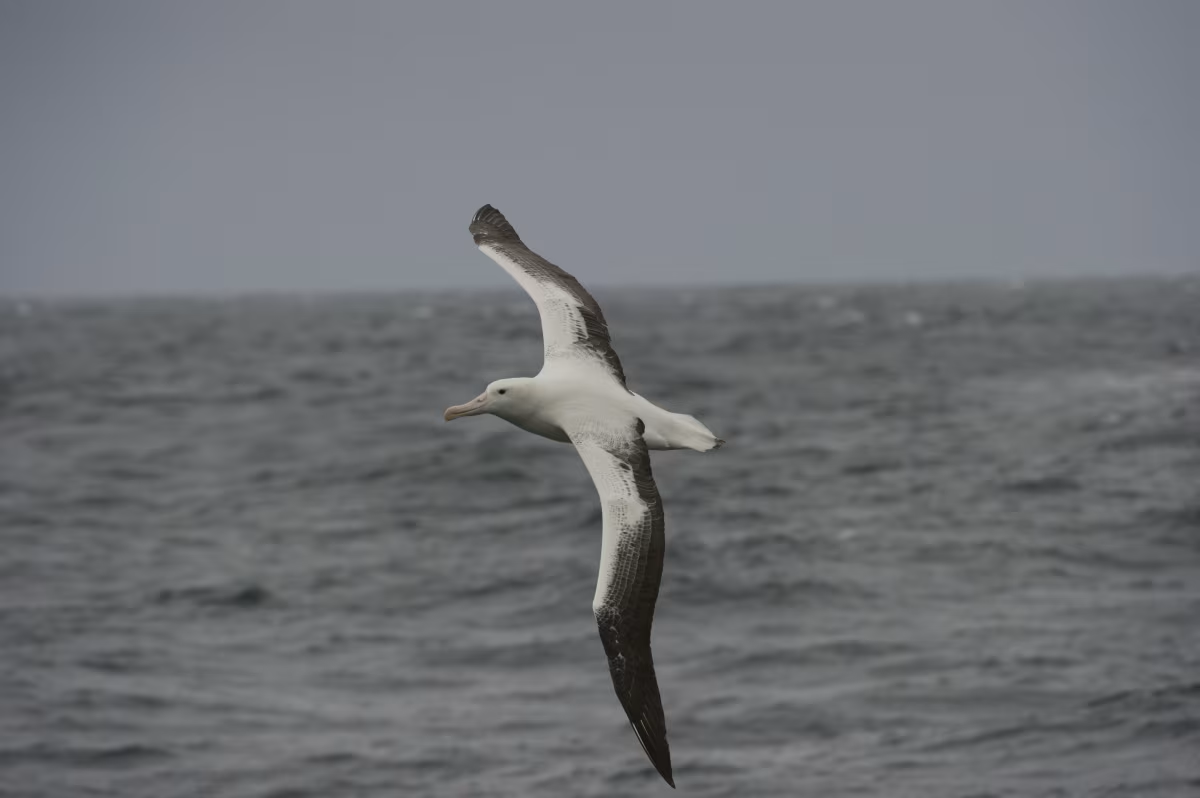
Photo by Fred van Olphen.
